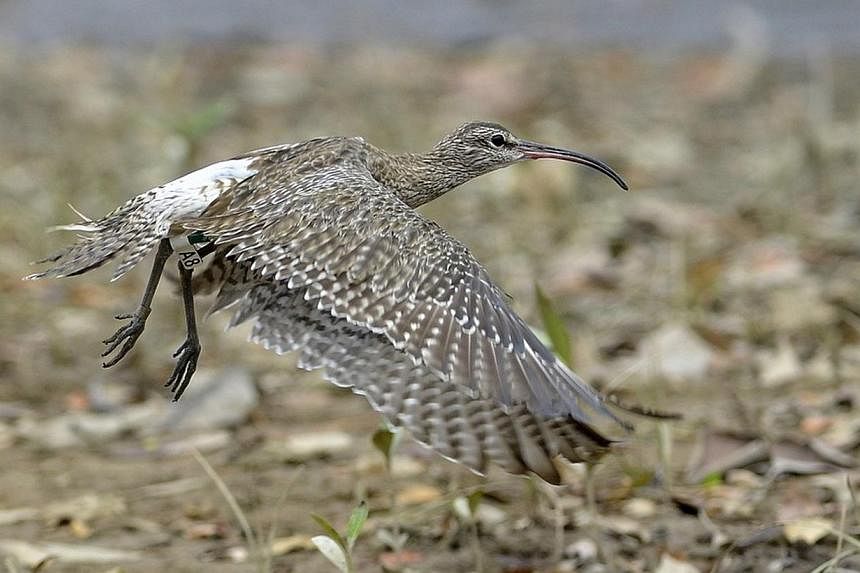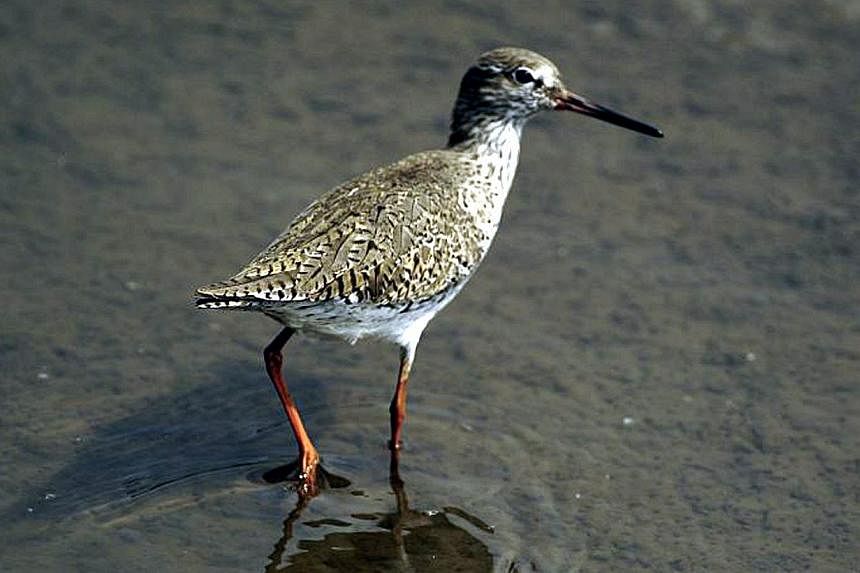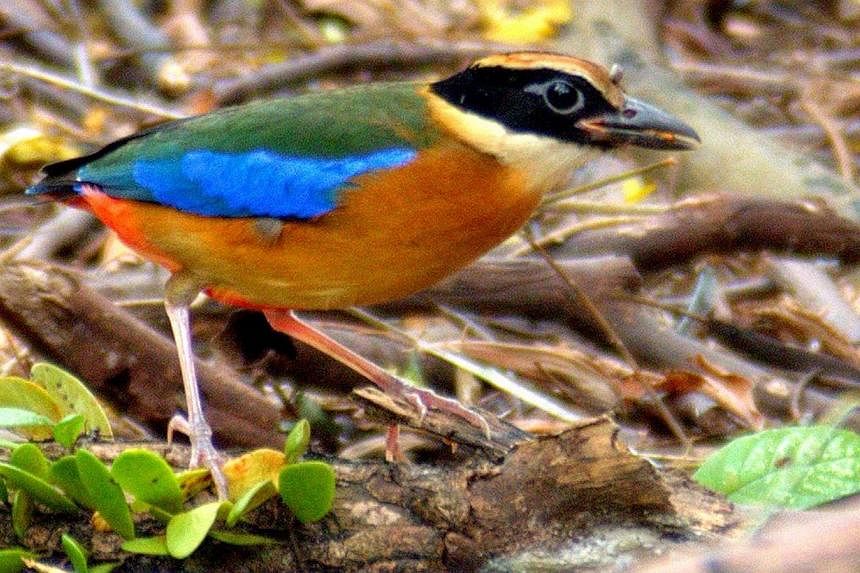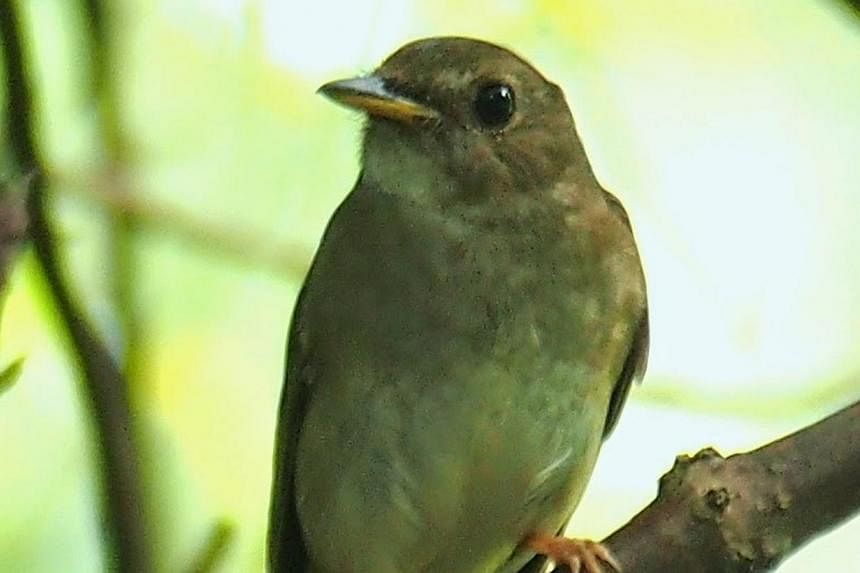Some migrant birds cannot seem to get enough of Singapore this year, as they extend their stopover to record lengths.
And this has meant a boon for local birdwatchers.
Just as Changi Airport is a popular stopover for travellers in the region, Singapore's mudflats, forests and parks are popular layovers for birds on their way to and from their homes, some of which are as far away as Siberia.
The migratory season typically begins in October and ends by the start of this month. This year, however, some are departing late.
Mr Alan Owyong, chairman of the Nature Society's Bird Group which keeps annual records of when each migrant species is last spotted in Singapore, said that at least 10 bird species have set new records for stayovers this year.
Among them is the brown-chested jungle flycatcher. The small, dusty-looking bird from southern China was last seen here on April 10 - three months after it usually flies home.
The blue-winged pitta, a brightly hued forest bird which visits to escape the winter in Indochina, was spotted at Bidadari late last month - two weeks after its normal departure.
"From the records, more late migrants are stopping over on their way back north," Mr Owyong said.
Sungei Buloh Wetland Reserve deputy director Sharon Chan added: "We have observed over the past few years that some migratory birds have lingered at the reserve beyond the migratory season. They include the common redshank and the whimbrel."
It is hard to say whether this year is particularly unusual - it may just be due to more people out looking for the birds, Mr Owyong said.
Birder Francis Yap, 44, has gone from Jurong West to Lorong Halus in Punggol as he pursues shrikes and sandpipers. "They may be leaving later because of the weather, which has been a bit strange this year," he said.
Some added that mass flowering, triggered by a dry spell earlier in the year, has led to more abundant fruit and insects - all food for the birds.
Could climate change be altering birds' migration patterns?
Last year, Mr Yong Ding Li, an ecology doctoral student at the Australian National University and a keen birder, pored over 20 years of data with colleagues from Singapore and Australia to show that the Japanese sparrowhawk and curlew sandpiper were arriving later each year, perhaps as warmer temperatures enabled them to stay at home longer each summer.
And anecdotally, blue-winged pittas have been spotted here in their breeding months from May to August, he said.
But, he added, bird migration is a complex cocktail of environmental and genetic factors, with some randomness thrown into the mix. "As any self-respecting researcher might say," he wrote in an e-mail, "there is a need for more research!"
To mark World Migratory Bird Day - which is celebrated in more than 70 countries - this weekend, the Sungei Buloh Wetland Reserve is holding activities such as colouring and mask-making for children between 9am and noon, as well as video screenings at 10am and noon.




